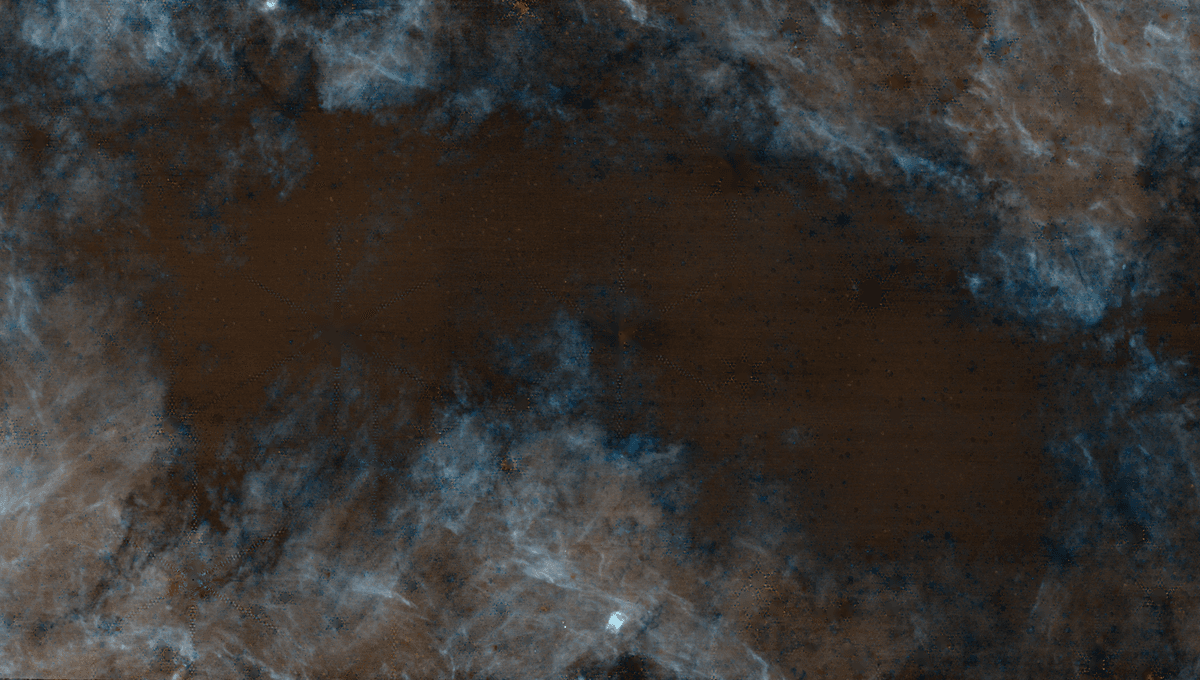
At the center of our galaxy, the Milky Way, there is a turbulent dark cloud called “The Brick”. It is dense, opaque, and full of cold gas, and for decades researchers couldn’t explain why a cloud that seems perfect to make stars was showing so little star formation. New observations from JWST have finally provided insights into what’s going on.
First of all, let’s clarify that despite little star formation, there are still 56,000 stars in The Brick. However, there are not as many as you would expect from a molecular cloud with a mass of 60 million suns. There could be many factors that come into play when explaining its inactivity. It might be too young, too turbulent, or have strong magnetic fields quenching new star formation.
Using JWST, the team looked at the emission of carbon monoxide through the cloud and discovered that there is a lot of it in the center and it is in the form of ice – a peculiar discovery for certain.
“Our observations compellingly demonstrate that ice is very prevalent there, to the point that every observation in the future must take it into account,” Adam Ginsburg, an astronomer from the University of Florida, said in a statement.
“With JWST, we’re opening new paths to measure molecules in the solid phase (ice), while previously we were limited to looking at gas. This new view gives us a more complete look at where molecules exist and how they are transported.”
However, ice doesn’t explain why stars are not forming as quickly and as often as expected. In fact, it’s quite the opposite. Stars only form from cold gas, because that’s when it can condense into a denser region. Over a certain threshold, that overdensity collapses under gravity and it will eventually become a star. Lots of ice should be a good sign for cool temperatures all around the cloud, but the team found quite the opposite.
The gas at the center of The Brick is warmer than comparable regions and this is likely a crucial piece of the puzzle that is this molecular cloud. But this is just the beginning; JWST was able to provide incredible new details on a well-known object that has baffled astronomers for decades. These are only the initial findings of extensive observations of The Brick, and there is a lot more that the team plans to find out.
“We don’t know, for example, the relative amounts of CO, water, CO2, and complex molecules,” said Ginsburg. “With spectroscopy, we can measure those and get some sense of how chemistry progresses over time in these clouds.”
The study is published in The Astrophysical Journal.
Source Link: Paradoxical Dark Region At Center Of Our Galaxy Has Finally Been Explained